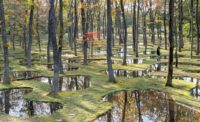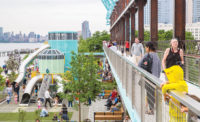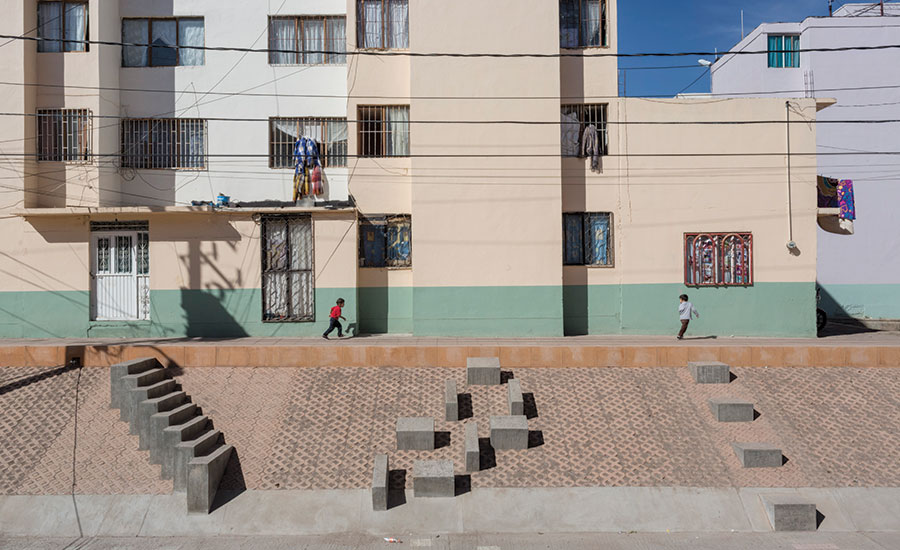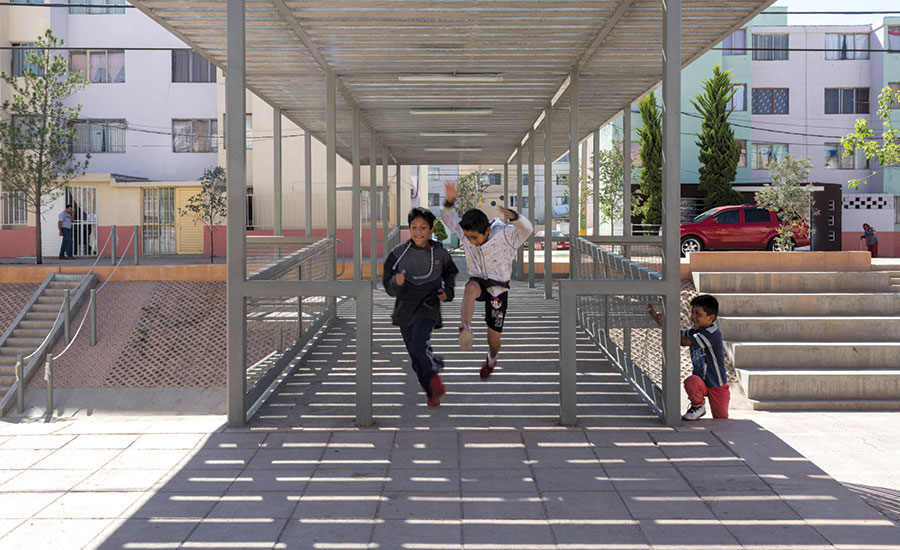Fresnillo Playground by Rozana Montiel
Zacatecas, Mexico

Concrete steps cast dynamic shadows while encouraging inventive ways for children to engage with the cityscape.
Photo © Sandra Pereznieto

A new bridge provides more shaded areas to play.
Photo © Sandra Pereznieto

The surrounding buildings were repainted in soothing light, earthy colors.
Photo © Sandra Pereznieto

The new bridge provides shade and daylight.
Photo © Sandra Pereznieto

The canal’s repaved sloped walls now allow for vegetation to grow.
Photo © Jaime Navarro





Architects & Firms
Architect Rozana Montiel established her eponymous Mexico City–based firm in 2009 with the belief that beauty is a basic right. From the concept design for a new cultural center at the historic national archive building in the capital—which was originally built as a panopticon prison—to the reimagining of highway rest stops, her work reflects inventive solutions for enhancing the public realm. For a recent project funded by the Instituto del Fondo Nacional de la Vivienda para los Trabajadores (INFONAVIT)—the federal agency for workers housing—Montiel was asked to revitalize a 40-year-old public-housing development in the city of Zacatecas in north-central Mexico.
Home to about 40,000 residents, the housing project, named Manuel M. Ponce, had earned a reputation as a magnet for criminal activity. The perception of its being dangerous, Montiel believed, was not helped by the “very aggressive” colors of its 102 buildings, and the concrete canal—which was dry and barren—that cuts through it. When the architect and her team visited the site, they saw that, although generally desolate, the canal had become a play area for children, some of whom were using garbage-can lids to slide down the sloped walls. Based on this observation, Montiel’s studio proposed that part of the circa 500-yard-long section of disused urban infrastructure be transformed into a playground.
Working with a limited budget, the design team repaved the slopes with cement bricks, organizing them in a lattice so that vegetation could grow from the gaps between the masonry. They appended concrete blocks to the slopes in various arrangements so that children could climb, sit, or incorporate them into games. “We thought that the stairs could be playful and dynamic,” says Montiel. “The goal was to create beautiful patterns that could give this ordinary material—concrete—a different quality.” Inspired by the scrappy form of play she had first encountered, the architect also carved out a variety of slides along each incline.
In addition to the playground, Montiel proposed repainting the surrounding housing to reflect the lighter, earthier colors seen in the city center, and replacing the two low pedestrian bridges over the canal, which were exposed to the sun, with one higher bridge that would provide shaded areas for children to play, both atop and below it. “Through these simple interventions, we were able to activate this former blight by shifting the perception of it as an unsafe area to a place that is lively,” she says.
Since it was completed last year, the project, called Fresnillo playground, has become so popular that children from across the city travel to play there. An added benefit is sight lines from the streets at the top of the slopes, which, now lined with trees, have become areas for residents to socialize while keeping an eye on their kids below. According to Montiel, young people from the neighborhood have even taken it upon themselves to host activities, such as samba classes, in the once derelict canal. “People have told me that it’s as if they are in a new place,” she says, “and that it feels much nicer to be there.”












